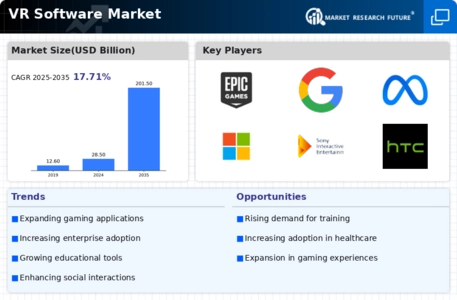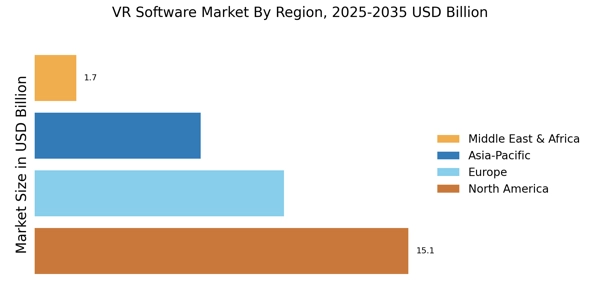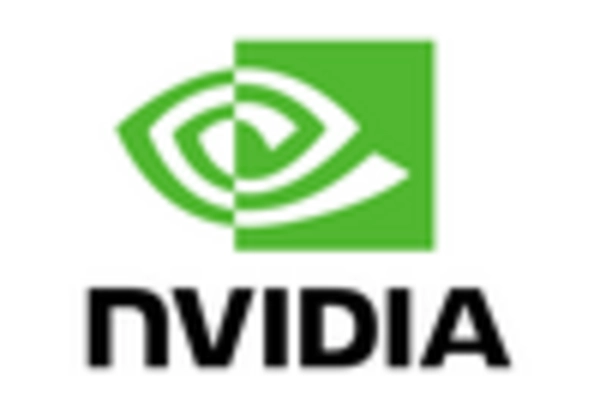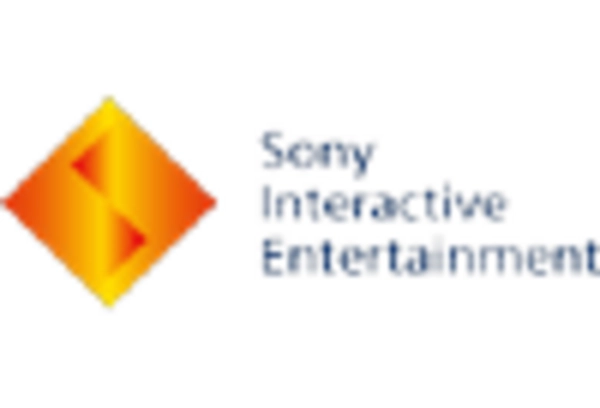Advancements in VR Technology
Technological advancements are playing a pivotal role in shaping the VR Software Market. Innovations in hardware, such as improved headsets and motion tracking systems, are enhancing the overall user experience. Additionally, software developments, including more sophisticated graphics and user interfaces, are making VR applications more accessible and appealing. The introduction of 5G technology is expected to further revolutionize the VR landscape by enabling faster data transmission and reducing latency. This technological evolution is likely to attract a broader audience, thereby expanding the market reach of VR software solutions. As a result, the VR Software Market is poised for substantial growth, driven by continuous improvements in technology.
Increased Investment in VR Startups
The VR Software Market is experiencing a surge in investment, particularly in startups focused on innovative VR solutions. Venture capitalists and tech giants are recognizing the potential of VR technology and are channeling funds into emerging companies. This influx of capital is fostering creativity and innovation, leading to the development of unique applications across various sectors, including education, healthcare, and real estate. Reports indicate that investment in VR startups has increased by over 30% in the past year, reflecting a growing confidence in the market's future. This trend is likely to accelerate the evolution of the VR Software Market, as new players introduce fresh ideas and technologies.
Growing Demand for Immersive Experiences
The VR Software Market is witnessing a growing demand for immersive experiences across various sectors. As consumers increasingly seek engaging and interactive content, businesses are investing in VR solutions to enhance user experiences. This trend is particularly evident in the entertainment and gaming sectors, where immersive storytelling and interactive gameplay are becoming essential. According to recent data, the VR gaming segment alone is projected to reach a market size of approximately 45 billion dollars by 2026. This surge in demand for immersive experiences is likely to drive innovation and investment in the VR Software Market, as companies strive to meet consumer expectations and differentiate themselves in a competitive landscape.
Integration of VR in Training and Simulation
The integration of VR technology in training and simulation applications is significantly influencing the VR Software Market. Industries such as aviation, military, and healthcare are increasingly adopting VR for training purposes, as it provides a safe and controlled environment for skill development. For instance, VR simulations allow medical professionals to practice complex procedures without risk to patients. The market for VR training solutions is projected to grow at a compound annual growth rate of 40% over the next five years. This trend underscores the effectiveness of VR in enhancing learning outcomes and is likely to drive further adoption within the VR Software Market.
Rising Popularity of Remote Collaboration Tools
The rising popularity of remote collaboration tools is reshaping the VR Software Market. As organizations adapt to hybrid work models, the demand for virtual collaboration platforms is increasing. VR technology offers unique solutions for remote teamwork, enabling users to interact in a shared virtual space, regardless of their physical location. This capability is particularly valuable in sectors such as architecture and design, where visualizing projects collaboratively can enhance creativity and efficiency. Market analysts predict that the demand for VR collaboration tools will grow significantly, potentially doubling in the next few years. This shift is likely to create new opportunities within the VR Software Market, as companies develop innovative solutions to facilitate remote collaboration.





















Leave a Comment